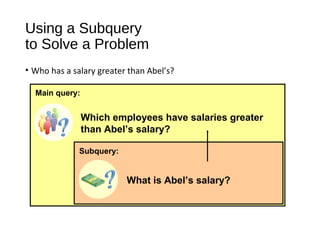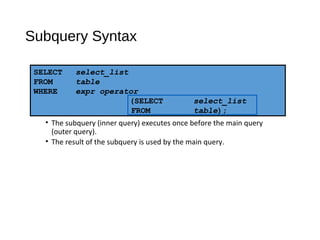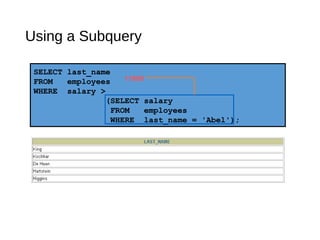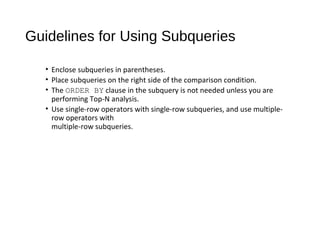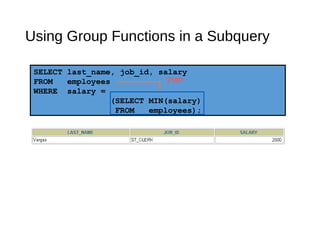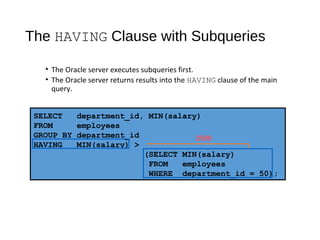Using subqueries allows you to solve complex queries by executing a subquery first to help filter or provide information for the main query. There are different types of subqueries - single-row subqueries that return one row and use single-row operators like =, >, and multiple-row subqueries that return multiple rows and use operators like IN, ANY, ALL. Proper syntax and understanding when to use different types of subqueries is important to get the correct results.

